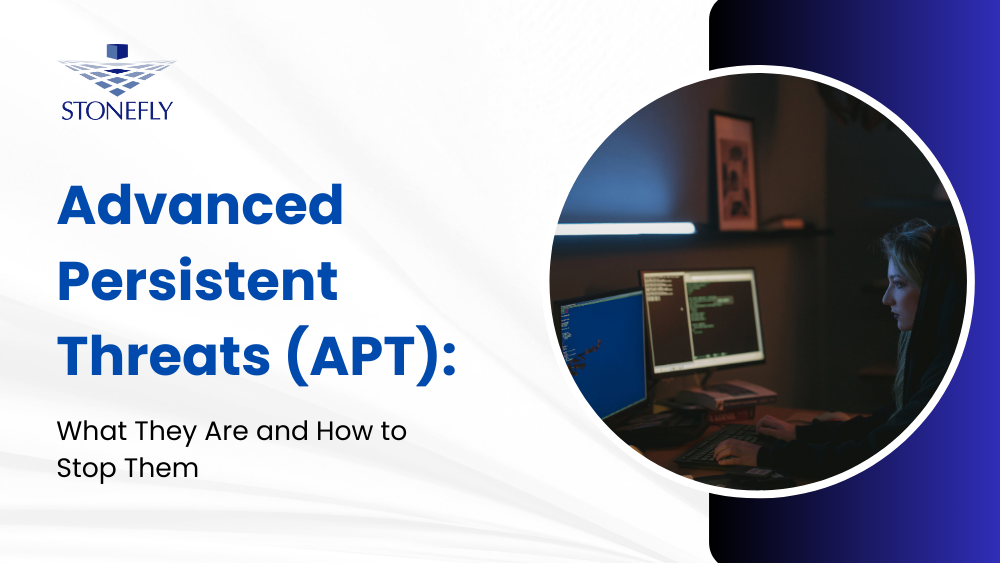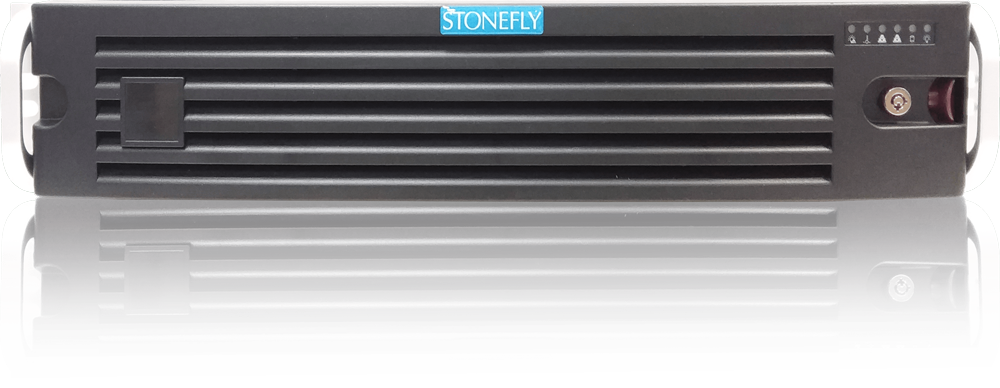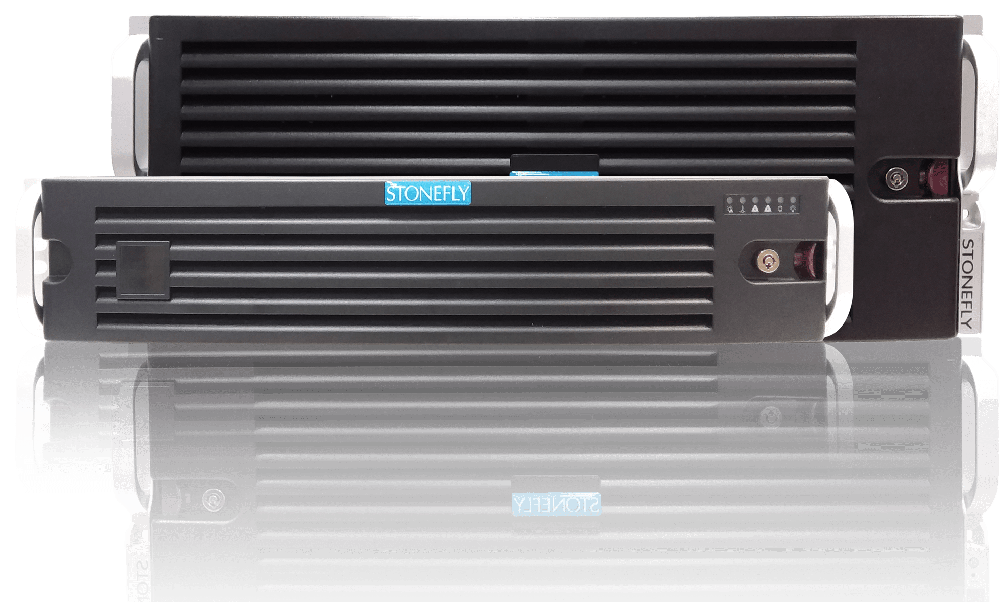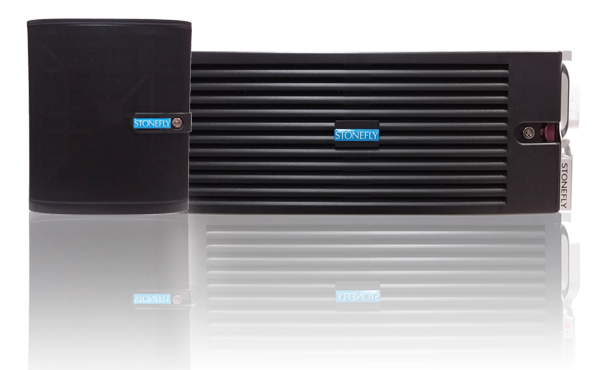In an ever-evolving digital landscape, the specter of ransomware looms large, and Trigona stands as a significant player in the realm of cyber threats. This blog delves into the multifaceted world of Trigona ransomware, unraveling its origins, unique characteristics, and impact on organizations.
We’ll explore strategies to prepare for and mitigate Trigona attacks, emphasizing the importance of defense measures like air-gapped backups, multi-factor authentication, and more.
What is Trigona Ransomware?
Trigona ransomware is a highly sophisticated and malicious strain of malware designed to encrypt victims’ data, rendering it inaccessible. Perpetrators behind Trigona typically demand a ransom payment in exchange for the decryption key, thereby extorting money from individuals, businesses, or organizations.
Trigona is part of the ever-evolving landscape of ransomware threats, employing advanced encryption techniques and stealthy infiltration methods to maximize its effectiveness.
Known Origin of Trigona Ransomware
The precise origins of Trigona ransomware remain shrouded in secrecy, much like other clandestine cyber threats. To date, here’s what’s known about Trigona ransomware:
- Trigona was first observed and reported by security researchers in late October/early November 2022, so it’s a relatively new ransomware variant.
- Its developers used the name “Trigona” which refers to a genus of stingless bees. This does not provide any clear clues about the actors.
- Technical analysis of the ransomware code and behavior has not revealed definitive evidence pointing to a known ransomware group or cybercriminal organization.
- The ransom notes and infection techniques used by Trigona (HTML application files, encryption behavior) bear some similarities to CryLock ransomware but are not exact copy.
- Incident response firms involved in Trigona cases have not publicly attributed the ransomware to a specific threat actor or group based on forensic evidence.
- Many initial access vectors like phishing, RDP exploits etc. are commonly used but don’t confirm a single point of origin for the ransomware development.
Notable Incidents and Targets of Trigona Ransomware
- In January 2023, Trigona infected multiple servers and workstations at an engineering firm in Germany. It gained initial access through the remote desktop protocol (RDP) and exploited a vulnerability. The firm paid 150,000 euros after servers and a project database were encrypted.
- In March 2023, Trigona infiltrated the network of a manufacturing company in the US via phishing emails. It encrypted all file servers containing CAD/CAM files and demanded $750,000. The company lost 3 weeks of work after paying the ransom.
- In April 2023, Trigona attacked poorly secured MS-SQL servers at a healthcare provider in Canada. It exploited weak credentials to access the servers and used CLR SqlShell to install itself as a service. Patient records and backups were encrypted, costing $2 million to recover.
- In May 2023, Trigona infiltrated a municipal government network in France after exploiting vulnerabilities in internet-facing services. It encrypted virtual servers and workstations, then stole emails and documents from an SQL database before demanding 1 Bitcoin.
- In June 2023, Trigona infected multiple endpoints at a construction firm in Australia via a spear phishing campaign. It encrypted project files, stole blueprints, and threatened to leak them unless 50 Bitcoin was paid. No payment was made.
Trigona seems to primarily target vulnerable servers running RDP/SQL and encrypt critical files, demanding high ransoms.
Deciphering Trigona Ransomware Attack Strategies
Infection Methods and Attack Vectors
Trigona ransomware deploys a diverse array of infection methods and attack vectors, which enable it to infiltrate a wide range of target systems. These methods typically capitalize on vulnerabilities and human errors, making them both potent and versatile:
- Exploitation of RDP Vulnerabilities: Trigona actors frequently target unpatched Remote Desktop Protocol (RDP) vulnerabilities, using them as a gateway to initiate their attacks.
- Phishing Emails: Deceptive email campaigns represent another favorite among Trigona’s attack vectors. These emails are designed to trick unsuspecting recipients into downloading and executing the ransomware through malicious attachments or links.
- Brute Force Attacks: Trigona’s operators engage in brute force attacks, particularly targeting weak or default credentials for RDP and SQL servers. This technique provides unauthorized access to systems, facilitating ransomware deployment.
- Vulnerability Exploitation: Trigona leverages the exploitation of various vulnerabilities in internet-facing services and applications, particularly web apps, as a means of infiltrating networks.
Trigona’s Unique Characteristics
Trigona ransomware is distinct in the ransomware landscape due to several unique characteristics, each contributing to its notoriety:
- Double Extortion: Trigona adopts a double extortion approach, where operators threaten to expose exfiltrated data publicly if the victim refuses to pay the ransom.
- Dynamic RSA Encryption: Trigona generates a novel 4,112-bit RSA public key for each victim, using it to encrypt AES keys. This dynamic encryption approach adds complexity to data recovery efforts.
- File Encryption Technique: Trigona employs robust encryption methods, using AES-256 in Output Feedback (OFB) mode to encrypt files in place. The encrypted files bear the ._locked extension.
- Detailed Ransom Notes: Trigona provides victims with comprehensive HTML ransom notes, offering precise instructions for making ransom payments and facilitating data recovery.
- Stealthy Operations: Trigona employs stealth tactics, including living-off-the-land techniques, to evade detection and blend in with normal processes, making it challenging for security solutions to spot its activities.
- Constant Updates: To maintain its effectiveness and stay ahead of security measures, Trigona regularly updates its codebase with new capabilities and enhanced anti-analysis features. This continuous evolution adds to its resilience and adaptability as a threat.
Impacts of Trigona Ransomware
Trigona ransomware, like many of its counterparts, inflicts substantial damage on its victims. Understanding the extent of these impacts is crucial in preparing for and mitigating its threats.
Financial Cost and Ransom Payments
One of the most immediate and tangible impacts of a Trigona ransomware attack is the financial burden it places on organizations. Typically, victims are presented with a ransom demand, and the stakes are high. Trigona employs a double extortion strategy, threatening to leak exfiltrated data if the ransom is left unpaid.
Based on available reports, some insights into Trigona’s financial impact include:
- According to Coveware’s Q4 2022 ransomware report, the average ransom payment for Trigona attacks increased from 150,000 in Q3 2022 to 220,000 in Q4 2022.
- Incident response firms involved in Trigona cases have reported ransom demands ranging from 50,000 to over 1 million, depending on the size of the victim.
- Publicly reported ransom payments include 150,000 paid by an engineering firm, 750,000 paid by a manufacturing company, and $2 million paid by a healthcare provider to recover after Trigona attacks.
- The FBI estimates total ransomware costs (downtime, recovery, lost revenue etc.) to be 3 – 4 times the actual ransom payment. This suggests total losses per Trigona victim could range from $150k to several million dollars.
While an overall total cost cannot be provided, given Trigona’s targeting of large enterprises and increasing ransom demands, it’s estimated that cumulative ransom payments and losses to date are likely in the multiple tens of millions, if not hundreds of millions, of dollars globally since the ransomware emerged in late 2022.
Data Security Risks and Loss of Sensitive Information
Trigona’s attack tactics also expose organizations to significant data security risks. The ransomware doesn’t merely encrypt files but exfiltrates sensitive data before doing so. This stolen information can encompass a wide range of confidential and proprietary material, from financial records to customer data, intellectual property, and more.
The theft of such sensitive information has multifaceted consequences. It jeopardizes the affected organization’s reputation and could lead to legal liabilities, especially if the data includes personally identifiable information (PII) or falls under regulatory compliance requirements. In the event that the ransom isn’t paid, Trigona operators threaten to publicly release this stolen data, adding another layer of concern.
Operational Disruption and Downtime
The operational disruption caused by a Trigona ransomware attack can be paralyzing. Once the malware infiltrates a network, it encrypts critical files and systems, rendering them inaccessible. This translates to downtime that can last days or even weeks, severely impacting an organization’s ability to function.
Businesses, educational institutions, healthcare providers, or any entity that relies on digital systems will experience productivity loss, and in some cases, service disruptions.
The cost of downtime can be challenging to quantify, especially when considering lost revenue, damage to reputation, and recovery efforts. Organizations may also need to rebuild compromised systems, which can be time-consuming and costly.
How to Prepare and Plan for Trigona Ransomware
As the threat of Trigona ransomware looms large, organizations need to fortify their defenses and develop a robust response plan to minimize the potential fallout of an attack.
Security Best Practices for Organizations
Preventing a Trigona ransomware attack begins with implementing comprehensive security best practices. These strategies serve as a proactive shield against threats and help organizations build resilience.
- Multi-Factor Authentication (MFA): Enforce MFA for all user accounts, especially for remote desktop access. This extra layer of security significantly reduces the risk of unauthorized entry through stolen or compromised credentials.
- Regular Software Patching: Keep all software, operating systems, and applications up to date with the latest security patches. Many ransomware attacks target known vulnerabilities, so patch management is crucial.
- Email Security: Enhance email security by deploying robust spam filters and educating employees about phishing threats. Often, ransomware enters systems through malicious email attachments or links.
- Access Control: Implement the principle of least privilege (PoLP), ensuring that users have only the minimum levels of access necessary for their roles. This reduces the attack surface and limits the damage potential.
- Network Segmentation: Divide networks into segments to isolate critical systems from the rest of the infrastructure. In the event of a breach, this prevents lateral movement by attackers.
- Regular Backups: Maintain secure, offline backups of critical data and systems. These backups are indispensable for recovery without paying a ransom.
- Air-Gapped and Immutable Backups: Implement air-gapped and immutable backups to ensure that data remains unaffected by ransomware attacks.
- Endpoint Protection: Invest in robust endpoint security solutions that can detect and prevent malware, including ransomware.
Incident Response Planning
Despite all preventive measures, organizations should be prepared for the worst-case scenario—an actual ransomware attack. Having a well-defined incident response plan in place is paramount.
- Designated Response Team: Establish a dedicated incident response team with clearly defined roles and responsibilities. This team should include IT, legal, communication, and management representatives.
- Ransomware-Specific Protocols: Develop response protocols specifically tailored to ransomware incidents. This should include a step-by-step guide on how to contain the threat, minimize damage, and initiate the recovery process.
- Communication Plan: Outline a communication strategy for internal and external stakeholders. Be transparent about the situation and the steps being taken to resolve it.
- Data Recovery Strategy: Design a comprehensive data recovery strategy that encompasses both data restoration and system rebuilding. Having secure and up-to-date backups is essential in this process.
- Legal and Regulatory Compliance: Ensure that the incident response plan adheres to legal and regulatory requirements, especially in cases involving data breaches.
- Testing and Drills: Regularly test and update the incident response plan. Conduct simulation exercises or drills to familiarize the response team with the process and identify areas for improvement.
- Reporting and Analysis: Post-incident, analyze the attack to understand how the ransomware infiltrated the system and to prevent future occurrences.
In the face of Trigona ransomware, being prepared is half the battle. Implementing robust security best practices, air-gapped and immutable backups, and having a well-thought-out incident response plan can significantly bolster an organization’s resilience and ability to recover swiftly in the event of an attack.
How to Mitigate Trigona Ransomware Attack Risks
Mitigating Trigona ransomware risks is of paramount importance, and it involves implementing a multi-layered security strategy to minimize the potential fallout of an attack. While there is some overlap with the previous section, this section focuses on the specific tools and practices to defend against Trigona ransomware.
Air-Gapped and Immutable Backups
One of the most effective ways to protect your data from Trigona ransomware is by maintaining air-gapped and immutable backups. Air-gapped backups are completely isolated from your network, ensuring that ransomware can’t reach them. Additionally, immutable backups prevent unauthorized modifications, serving as a safeguard against encryption and deletion attempts.
Multi-Factor Authentication (MFA) Implementation
Multi-factor authentication (MFA) is a vital defense against ransomware attacks. By requiring users to provide multiple forms of verification, such as something they know (password) and something they have (a token), MFA significantly reduces the risk of unauthorized access, especially through compromised or stolen credentials.
Protecting Against Volume Deletion
Trigona ransomware is known for not only encrypting files but also potentially deleting critical data. Protecting against volume deletion is essential. Implementing volume deletion protection features that require stringent verification by authorized personnel can safeguard against irreversible data loss.
Leveraging Immutable Snapshots
Immutable snapshots capture a point-in-time view of your data that cannot be altered, providing a valuable layer of protection against ransomware attacks. Even if your primary data is compromised, immutable snapshots allow you to roll back to a secure state without loss of data.
The Role of Anti-Ransomware Scanners
Anti-ransomware scanners play a pivotal role in detecting and preventing Trigona ransomware. These specialized tools are designed to identify ransomware activities, stop them in their tracks, and alert administrators to the threat. Keeping your anti-ransomware software updated is essential for it to remain effective against evolving ransomware strains.
Advanced Data Protection Strategies for Trigona Ransomware
As Trigona ransomware continues to evolve, organizations must employ advanced defense strategies to enhance their security posture. These strategies go beyond basic measures and encompass a holistic approach to fortify defenses against this sophisticated threat.
Zero Trust Security
Zero Trust security is a paradigm shift in cybersecurity that treats every user and device as potentially untrustworthy, even if they are within the network perimeter. It advocates strict access control, continuous monitoring, and identity verification to mitigate risks. By applying the principles of Zero Trust, organizations can significantly reduce the attack surface, making it harder for Trigona ransomware to infiltrate their networks.
Network Segmentation
Network segmentation involves dividing a network into smaller, isolated segments, each with its own security controls. This approach limits lateral movement for ransomware within the network. If Trigona manages to breach one segment, it won’t have free rein to infect the entire network. Effective network segmentation helps contain and isolate threats, minimizing the potential damage caused by a ransomware attack.
Endpoint Security Solutions
Endpoint security solutions are paramount in defending against Trigona ransomware. These solutions offer real-time threat detection, antivirus protection, and behavioral analysis of endpoints. They play a crucial role in identifying and stopping ransomware at the device level, preventing the malware from encrypting files or compromising the system.
Conclusion
Trigona ransomware represents a formidable and evolving threat in the cybersecurity landscape. Understanding its infection methods, impact on organizations, and the importance of proactive measures is essential. Organizations must prioritize security best practices, incident response planning, and advanced defense strategies.
The financial and data security risks posed by Trigona underscore the need for vigilant protection. Mitigation measures, including air-gapped and immutable backups, multi-factor authentication, volume deletion protection, immutable snapshots, and anti-ransomware scanners, are critical components of a robust defense strategy.
To stay ahead of Trigona, organizations must adopt advanced defense strategies, such as Zero Trust security, network segmentation, and endpoint security solutions. These measures are key to reducing the attack surface and enhancing overall resilience.










